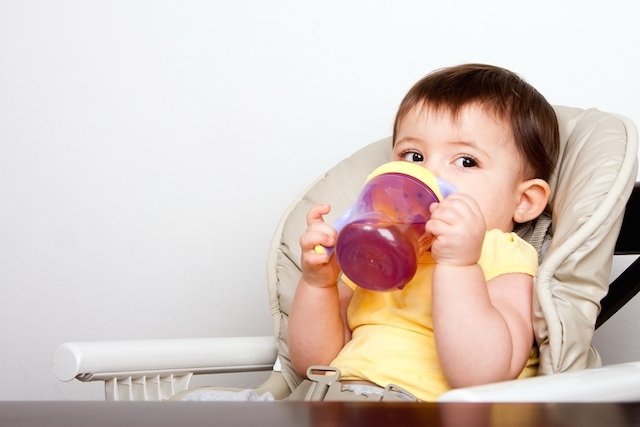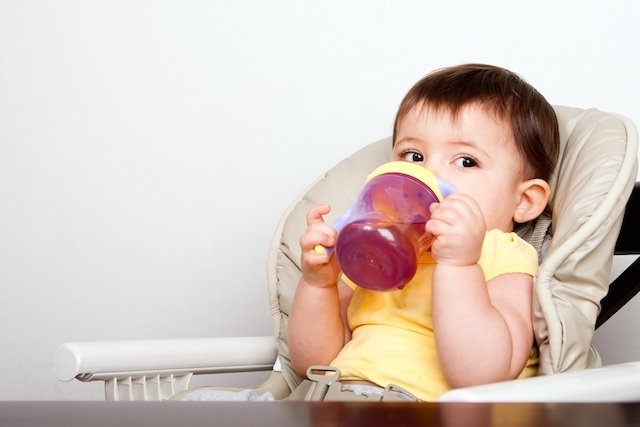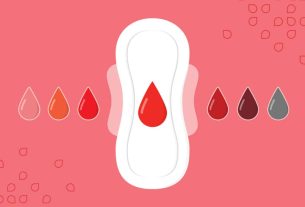Parents should start removing the bottle as a way of feeding their child between the first and third year of life, especially when they stop breastfeeding, to avoid the child becoming more dependent on the habit of sucking for food.
From the moment the baby can hold the plastic cup well and drink without choking, still with parental supervision, the bottle can be removed and progress to feeding only from the cup.
Here are 7 tips to make this process easier.
1. Make the cup an achievement
A good strategy is for parents to talk to the child and make it seem like the transition from bottle to cup is actually an incredible achievement for them.
It must be said that the child is growing and becoming an adult, thus gaining the right to use the cup like other big and independent people. This way, she will feel encouraged to make the switch.

2. Create a good environment
To stimulate the child, a tip is for the family to always be at the table, especially during main meals and breakfast.
Parents should talk, tell stories and create a pleasant environment, where everyone is grown up and uses cups and plates instead of lying in bed or on the sofa alone with a bottle.
3. Gradually remove the cup
So that it doesn’t come as a shock to the child, the ideal is to remove the cup gradually, starting by using the cup during meals during the day and leaving the bottle for the night, if necessary.
When using this tactic, it is important to remember not to take the bottle on trips or visits to family, as the child must understand that he now uses his own cup.
4. Choose your favorite glass
To further involve the child in the transition process, a good tip is to take them to choose the new cup that will be theirs alone. This way, she can choose the cup with the photo of her favorite character and her favorite color.
For parents, the tip is to choose lightweight cups with handles to help the child hold it. Those with a nozzle with holes at the end are a good option for starting the process.
5. Give a bottle to those who need it
Another strategy for the baby to get rid of the bottle is to say that it will be given to younger children who do not yet know how to use a cup or to a children’s character, such as Santa Claus or the Easter bunny.
This way, when she asks for the bottle back, the parents may argue that it has already been given to someone else and that there is no way to get it again.
6. Be firm and don’t back down
No matter how well the baby accepts the removal of the bottle, at some point he will miss it and throw a tantrum to get it back. However, it is important for parents to resist the child’s suffering, as bringing the bottle back will make them understand that they can get everything they want back, despite their commitment to get rid of the object.
Therefore, respect decisions and commitments so that the child also develops this sense of responsibility. Be patient, she will stop having a tantrum and get over this phase.
7. Programe-se
Parents must plan and have a goal for their child to stop using the bottle, which is normally recommended for 1 to 2 months until the cup actually prevails.
During this period, different strategies must be used, remembering not to go back at each step taken in this process.
Now see tips on How to make your baby sleep through the night.

Sign up for our newsletter and stay up to date with exclusive news
that can transform your routine!
Warning: Undefined array key "title" in /home/storelat/public_html/wp-content/plugins/link-whisper-premium/templates/frontend/related-posts.php on line 12
Warning: Undefined array key "title_tag" in /home/storelat/public_html/wp-content/plugins/link-whisper-premium/templates/frontend/related-posts.php on line 13




